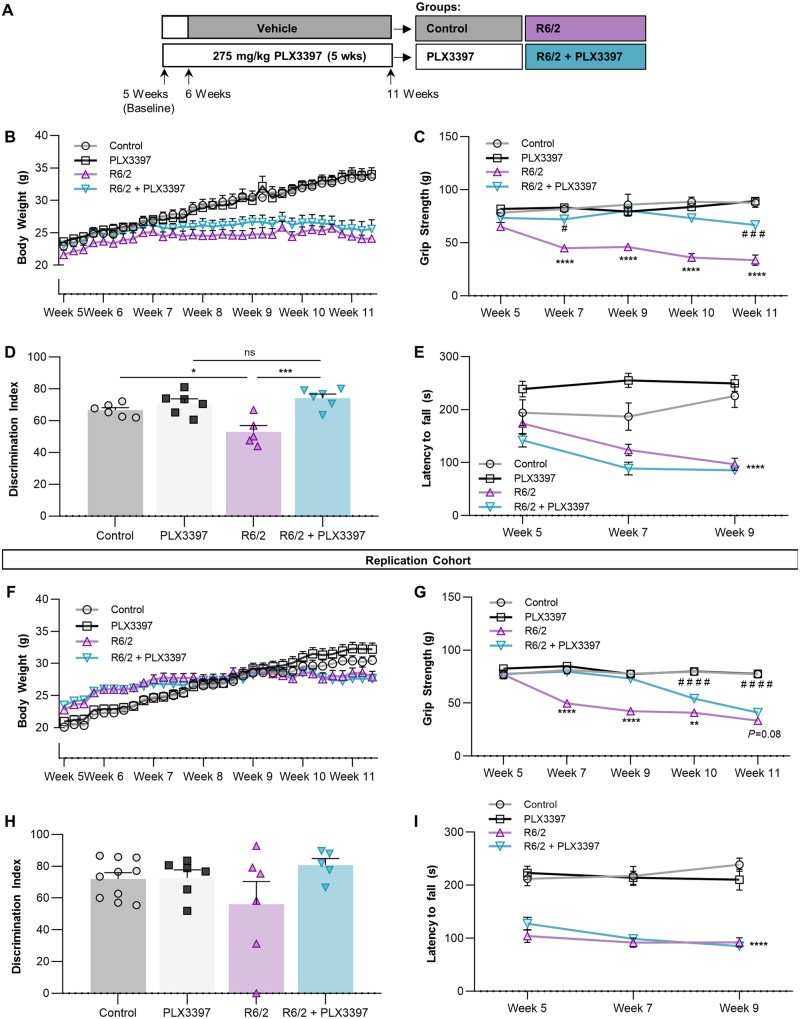Figure 1.
PLX3397 (CSF1Ri) ameliorates grip strength and object memory deficits in R6/2 mice. Following baseline measurements, 6-week-old non-transgenic or R6/2 mice were treated with vehicle (Control, R6/2) or 275 mg/kg PLX3397 (PLX3397, R6/2+PLX3397) for 5 weeks to attain microglial depletion through CSF1Ri. (A) Experimental design (n = 5–6/group). (B) Body weight from baseline to end of experiment displayed stereotypical R6/2 plateauing (n = 5–6/group). (C) R6/2+PLX3397 forelimb grip strength deficits were significantly reduced compared to R6/2 at every time point tested (P < 0.0001; MIXED procedure with post hoc contrasts; n = 5–6/group). (D) Performance in novel object recognition (NOR) test by R6/2+PLX3397 mice at Week 11 was significantly better than R6/2 mice (P < 0.001) and not different from PLX3397 controls (two-way ANOVA with Tukey’s post hoc test; n = 5–6/group). (E) Latency to fall from an accelerating Rotarod was not altered with treatment and displayed the stereotypical R6/2 genotype effect (P < 0.0001; MIXED procedure; n = 6/group). (F–I) Replication cohort for validation of behavioural outcomes using the same statistical analyses. (n = 8–10/group, except for novel object recognition where n = 5–10/group due to exclusion criteria from Day 1 acquisition period or Day 2 testing period.) Statistical significance is denoted by *P < 0.05, **P < 0.01, ***P < 0.001, ****P < 0.0001, ns = not significant. For grip strength, asterisk indicates R6/2 versus R6/2+PLX3397 and hash symbol indicates PLX3397 versus R6/2+PLX3397. Error bars indicate SEM.

